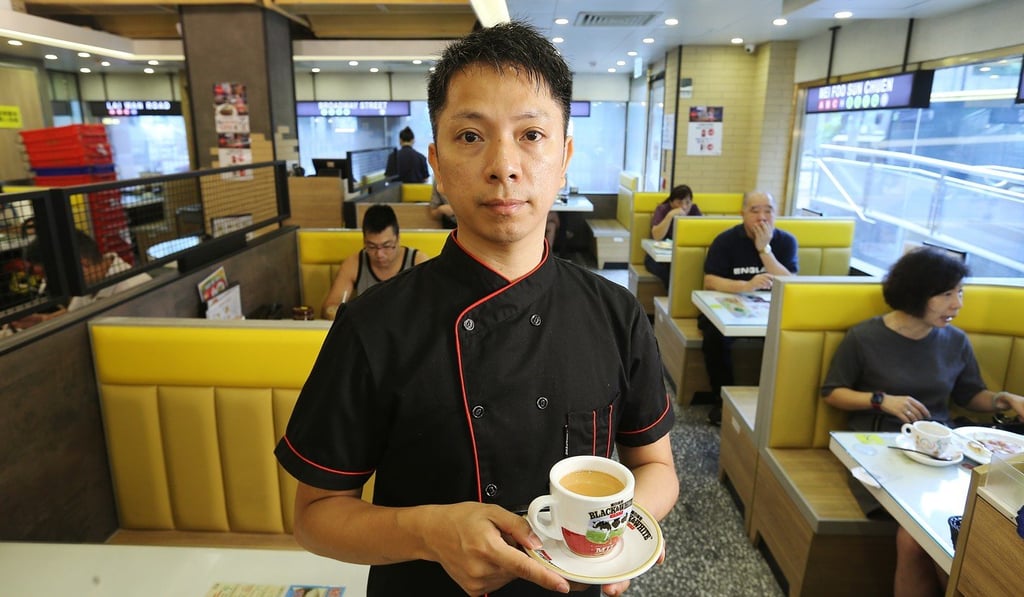How Hong Kong-style milk tea became part of local culture
Super strong, drawn through a silk stocking four times, served with a splash of evaporated milk, the traditional drink with colonial roots has been energising Hongkongers of all types since the second world war

For as long as Hong Kong food writer Emily Tong Lai-fong can remember, she’s been eating at Wai Kee Noodle Café near her childhood home in Sham Shui Po. Wai Kee started serving the community as a dai pai dong (open-air food stall) in the 1950s.

In the short time we’ve been here, there’s been a fast turnover of customers shuffling in and searching for a spare plastic stool. Sitting shoulder to shoulder around five foldable round tables, people scoff down dishes such as pork liver noodles, ordered from wall-mounted menus with red Chinese characters. Despite being strangers, one thing they have in common is their drink of choice.
Known as yeet lai cha (hot milk tea), Hong Kong milk tea has a rich, hearty flavour. It’s made creamy with the addition of evaporated milk, and packs a long-lasting tannin punch from the carefully steeped and “pulled” mix of tea leaves. “It’s a comfort drink,” says Tong, who is in her 40s, adding she drank it daily as a child.
Milk tea is a staple for many Hongkongers; its sweetness making it palatable for all ages, despite its high caffeine levels. It is firmly part of the city’s eating out culture. Due to the complexities of making it, however, Tong says it is “near impossible to make a good one at home”.

Grassroots chefs take stock of Hong Kong’s rich culinary tradition in cookbook
Bing sutt (ice café), cha dong (tea house) and dai pai dong specialised in selling affordable variations of Western dishes for locals. Tse says the ingredients of the British tea were “localised” and adapted to Hongkongers’ tastes. Regular milk was replaced with the evaporated milk that is still used today (many tea makers say Black&White evaporated milk makes the smoothest cuppa), and a stronger blend of tea leaves were chosen.